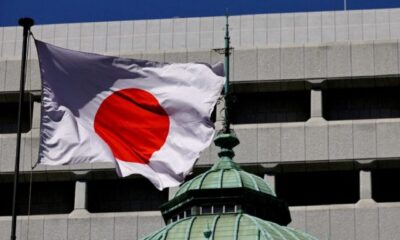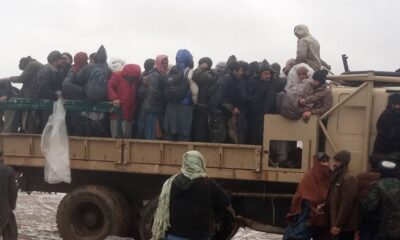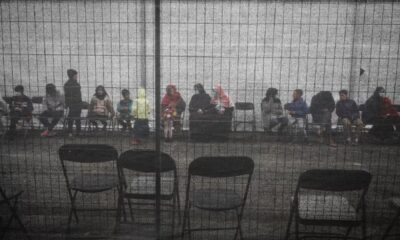Latest News
Wave of threats and killings has sent ‘chilling message’ to Afghan media

Taliban forces are deliberately targeting journalists and other media workers, including women, in Afghanistan, Human Rights Watch said this week.
“A wave of threats and killings has sent a chilling message to the Afghan media at a precarious moment as Afghans on all sides get set to negotiate free speech protections in a future Afghanistan,” said Patricia Gossman, associate Asia director.
“By silencing critics through threats and violence, the Taliban have undermined hopes for preserving an open society in Afghanistan,” she said.
In a statement issued by the rights watchdog, HRW said threats and attacks against journalists across the country have increased sharply since talks began between the Afghan government and the Taliban, heightening concerns about preserving freedom of expression and the media in any peace settlement.
Human Rights Watch has found that Taliban commanders and fighters have engaged in a pattern of threats, intimidation, and violence against members of the media in areas where the Taliban have significant influence, as well as in Kabul.
Those making the threats often have an intimate knowledge of a journalist’s work, family, and movements and use this information to either compel them to self-censor, leave their work altogether, or face violent consequences, the statement read.
HRW said provincial and district-level Taliban commanders and fighters also make oral and written threats against journalists beyond the areas they control. Journalists say that the widespread nature of the threats has meant that no media workers feel safe.
Human Rights Watch interviewed 46 members of the Afghan media between November 2020 and March 2021, seeking information on the conditions under which they work, including threats of physical harm.
Those interviewed included 42 journalists in Badghis, Ghazni, Ghor, Helmand, Kabul, Kandahar, Khost, Wardak, and Zabul provinces and four who had left Afghanistan due to threats.
In a number of cases that Human Rights Watch documented, Taliban forces detained journalists for a few hours or overnight.
In several cases they or their colleagues were able to contact senior Taliban officials to intercede with provincial and district-level commanders to secure their release, indicating that local commanders are able to take decisions to target journalists on their own without approval from senior Taliban military or political officials, HRW stated.
Taliban officials at their political office in Doha, Qatar, have denied that their forces threaten the media and say that they require only that journalists respect Islamic values.
But Taliban commanders throughout Afghanistan have threatened journalists specifically for their reporting. The commanders have considerable autonomy to carry out punishments, including targeted killings, read the statement.
Women journalists, especially those appearing on television and radio, face particular threats.
The recent wave of violent attacks has driven several prominent women journalists to give up their profession or leave Afghanistan altogether.
Human Rights Watch found that female reporters may be targeted not only for issues they cover but also for challenging perceived social norms prohibiting women from being in a public role and working outside the home.
Journalists outside the country’s main cities are especially vulnerable to attacks because they are more exposed and lack even the minimal protection that a larger Afghan media, government, and international presence provides.
However, as the fighting has increasingly encroached on major cities, these have offered decreasing protection to journalists seeking safety from the violence in their home districts, the statement read.
A journalist covering the fighting in Helmand province told Human Rights Watch that one of his sources told him the Taliban were looking for him and he should lie low.
“The majority of Afghan journalists feel intimidated and threatened,” he said. “All the journalists are scared because everyone feels like they could be next.”
Human Rights Watch called on the Taliban leadership to immediately cease intimidation, threats, and attacks against journalists and other media workers.
They should urgently provide clear, public directives to all Taliban members to end all forms of violence against journalists and other media workers, and intimidation, harassment, and punishment of Afghans who have criticized Taliban policies, the statement read.
The Taliban leadership should also explicitly reject violence against women in the media, the rights watchdog stated.
In addition, HRW called on the United Nations and governments supporting the Intra-Afghan Negotiations to publicly press the Taliban leadership to adopt these recommendations, and provide increased support, including protection, to independent media organizations and journalists in Afghanistan, especially those facing threats.
“It’s not enough for Taliban officials in Doha to issue blanket denials that they’re targeting journalists when Taliban forces on the ground continue to intimidate, harass, and attack reporters for doing their jobs,” Gossman said.
“Countries supporting the peace process should press for firm commitments from all parties to protect journalists, including women, and uphold the right to free expression in Afghanistan.”
Latest News
Japan allocates nearly $20 million in humanitarian aid for Afghanistan

The Embassy of Japan in Afghanistan announced on Friday that the country has allocated $19.5 million in humanitarian assistance to Afghanistan.
In a statement, the Japanese Embassy said it hopes the aid will help bring positive change to the lives of vulnerable Afghans.
According to the statement, the assistance will cover the basic humanitarian needs of vulnerable communities in Afghanistan.
The embassy added that the aid will be delivered through United Nations agencies, international organizations, and Japanese non-governmental organizations operating in Afghanistan.
Japan’s total assistance to Afghanistan since August 2021 has reached more than $549 million.
Latest News
Afghan border forces prevent illegal entry of hundreds into Iran
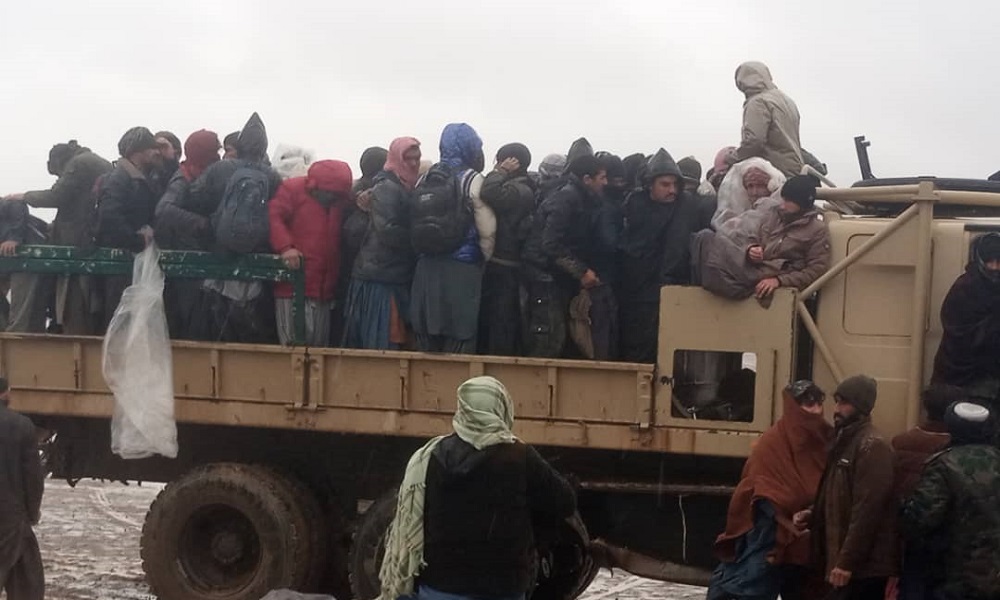
Security forces at the Islam Qala border in Herat province prevented hundreds of young Afghans from illegally entering Iran.
Officials from the 207 Al-Farooq Army Corps said that around 530 people attempted over the past two days to illegally enter Iranian territory through areas of Kohsan district in Herat, but border forces detained them and transferred them back to their original areas.
Meanwhile, officials in the local administration of Herat said that due to severe cold along the illegal migration route to Iran, three Afghan migrants have lost their lives in the Kohsan district of the province, and a shepherd has also died there for the same reason.
Mohammad Yousuf Saeedi, spokesperson for the Herat governor’s office, said that some statistics and images shared on social media regarding the incident are not reliable.
According to him, further investigations are underway to determine whether any individuals have died on the other side of the border.
Latest News
US pauses green card lottery program after Brown University shooting

President Donald Trump suspended the green card lottery program on Thursday that allowed the suspect in the Brown University and MIT shootings to come to the United States.
Homeland Security Secretary Kristi Noem said in a post on the social platform X that, at Trump’s direction, she is ordering the United States Citizenship and Immigration Services to pause the program, the Associated Press reported.
“This heinous individual should never have been allowed in our country,” she said of the suspect, Portuguese national Claudio Neves Valente.
Neves Valente, 48, is suspected in the shootings at Brown University that killed two students and wounded nine others, and the killing of an MIT professor. He was found dead Thursday evening from a self-inflicted gunshot wound, officials said.
Neves Valente had studied at Brown on a student visa beginning in 2000, according to an affidavit from a Providence police detective. In 2017, he was issued a diversity immigrant visa and months later obtained legal permanent residence status, according to the affidavit. It was not immediately clear where he was between taking a leave of absence from the school in 2001 and getting the visa in 2017.
The diversity visa program makes up to 50,000 green cards available each year by lottery to people from countries that are little represented in the U.S., many of them in Africa. The lottery was created by Congress, and the move is almost certain to invite legal challenges.
Nearly 20 million people applied for the 2025 visa lottery, with more than 131,000 selected when including spouses with the winners. After winning, they must undergo vetting to win admission to the United States. Portuguese citizens won only 38 slots.
Lottery winners are invited to apply for a green card. They are interviewed at consulates and subject to the same requirements and vetting as other green-card applicants.
Trump has long opposed the diversity visa lottery. Noem’s announcement is the latest example of using tragedy to advance immigration policy goals. After an Afghan man was identified as the gunman in a fatal attack on National Guard members in November, Trump’s administration imposed sweeping rules against immigration from Afghanistan and other counties.
While pursuing mass deportation, Trump has sought to limit or eliminate avenues to legal immigration. He has not been deterred if they are enshrined in law, like the diversity visa lottery, or the Constitution, as with a right to citizenship for anyone born on U.S. soil. The Supreme Court recently agreed to hear his challenge to birthright citizenship.
-

 Latest News5 days ago
Latest News5 days agoGermany speeds up admission of Afghans from Pakistan
-

 Sport5 days ago
Sport5 days agoIPL 2026 Auction set for Abu Dhabi with $28.6 million purse at stake
-
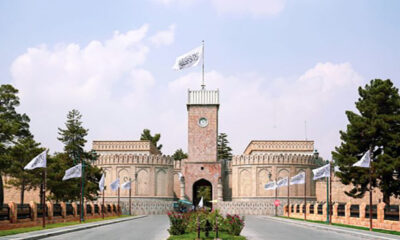
 Latest News4 days ago
Latest News4 days agoAfghanistan to establish independent oil and gas authority
-

 Latest News5 days ago
Latest News5 days agoUS intelligence chief warns of ‘direct threat’ from suspected terrorists inside the country
-
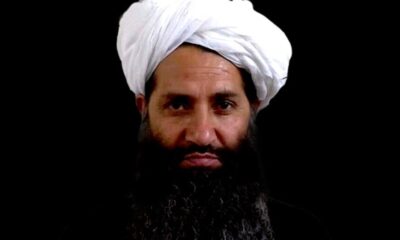
 Latest News3 days ago
Latest News3 days agoIEA supreme leader stresses enforcement of Sharia law and sincere public service
-

 International Sports4 days ago
International Sports4 days agoILT20: Desert Vipers qualify for playoffs with five-wicket win over Dubai Capitals
-

 World5 days ago
World5 days agoFather and son behind Bondi Jewish festival shooting that killed 15, Australian police say
-

 International Sports4 days ago
International Sports4 days agoATN secures broadcast rights for four major AFC sporting events


